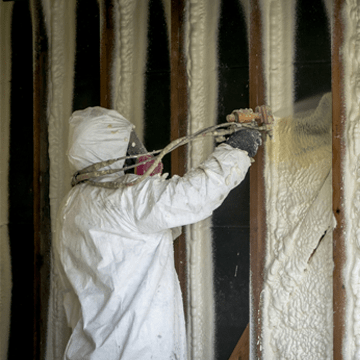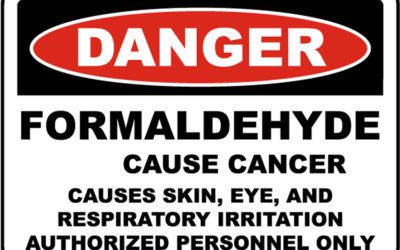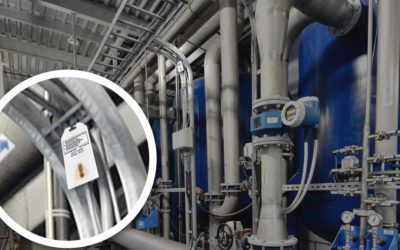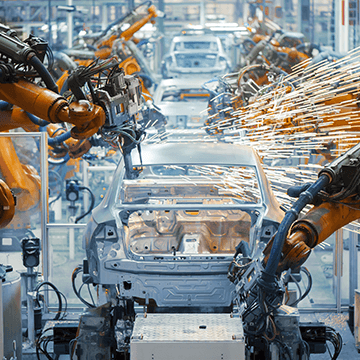ConstRuction
– Chemical Safety in the Construction Industry
Constructing common-sense chemical safety procedures
Safety in the construction industry is common practice, however it is a challenge to develop safety plans for the wide variety of chemicals found on the modern construction site. Chemical solvents, acids, paints and sealants, as well as industrial cleaners and gasoline are not uncommon when working on a job site. Each one poses a unique chemical hazard. In addition, many of the building materials used in construction can contain toxic compounds ranging from waterproofing and curing compounds to wood treatments. Exposure to these hazardous materials can become an increased hazard when present in a confined space. SafeAir & ChromAir badges help protect workers on the jobsite from the dangers of chemical exposure.

– Designed for the Construction Industry
Chemicals Detected
– CONSTRUCTION –
NEWS & UPDATES
Formaldehyde: Debunked
Found naturally in the body and other organic materials in our environment, formaldehyde or CH2O is actually all around us. So why the stigma? Why when we hear formaldehyde do we think of embalming fluids and mortuaries? Where is it actually found and why does Morphix...
The Big Deal – Chemical Detection
What is Chemical detection and why do we need it? Believe it or not, the need for chemical detection is not just prevalent in chemical labs and big science corporations. In fact, the need spreads out over almost every industry in one way or another. From sanitizing...
If I have an area monitor, do I need to do personal monitoring?
Great question! First, let’s quickly talk about what is the difference between an area monitor and a personal monitor. An area monitor, like the name describes, is an instrument placed in a specific area to monitor the chemical concentration in that...
– HOW WE DO IT –
SOLUTIONS
Exhaust Fumes
Carbon Monoxide (CO), known as the silent killer, is present in the exhaust from internal combustion engines, such as forklifts, generators, trucks and automobiles. Anyone working in close proximity to such equipment has the potential for carbon monoxide exposure. SafeAir and ChromAir CO badges help ensure employees are safe when working around toxic gases such as carbon monoxide.
Building Materials
Engineered wood products use formaldehyde and phenol formaldehyde resins as synthetic polymers to bind wood fibers together, increasing strength of the building material. Employees who work with or manufacture these building materials risk formaldehyde exposures. SafeAir and ChromAir badges help ensure employees are safe when working around toxic chemicals like formaldehyde.
Electrical Components
Mercury exists in the thermostats, switches, lightbulbs and much of the equipment found in old buildings. Workers renovating old buildings risk mercury exposure when these mercury containing devices break, releasing toxic mercury vapors. SafeAir and ChromAir badges help ensure employees are safe when working around toxic vapors such as mercury.
Sealants & Adhesives
Isocyanates are a chemical building block found in various coatings, adhesives, and sealants as well as insulation materials used by the construction industry. The use of pre-polymerized urethanes in polyurethane sealants reduces the amount of isocyanate present in the mix compared to their spray foam urethane-cousins. However, containing up to 2% unreacted isocyanates, these sealant mixes still pose a chemical hazard to workers. In an enclosed space without proper ventilation isocyanate exposure can be dangerous. SafeAir badges help keep employees safe from isocyanate exposure when working with sealants & adhesives.
Spray Foam Insulation
Isocyanates are a chemical building block found in various coatings, adhesives, and sealants as well as insulation materials used by the construction industry. Spray Polyurethane Foam (SPF) is a multi-versatile insulation material used in a wide variety of construction applications. SPF is typically made on-site by mixing a two-part solution, with part A commonly being MDI or methylene diphenyl diisocyanate. Spray foam applicators risk isocyanate exposure when spraying foam by being in close proximity to these materials as they react. Spray foam has the potential to release isocyanates up until the foam is fully cured. SafeAir badges help to protect spray foam applicators and their assistants from isocyanate exposure when working around toxic vapors such as TDI & MDI.
Spray Coatings
Isocyanates are a chemical building block found in various coatings, adhesives, and sealants as well as insulation materials used by the construction industry. Weather treatment and commercial roof restoration often use spray-on coatings that present a chemical hazard to those in close proximity of the application. Similar to SPF, these coatings are formed by mixing isocyanates with a reacting polyol, and present a source of isocyanate exposure for those in close proximity until the coating is fully cured. SafeAir badges help to protect workers from the hazard of isocyanate exposure keeping them safe when applying spray-on coatings.
– EXPERIENCE YOU CAN TRUST
MORE INDUSTRIES SERVED
– GET IN TOUCH –











